Before I begin I first must give props where props are due. I based this setup off johnsma22's near identical setup posted here.
My setup is very close to what johnsma22 did but instead of building a bracket like lustreking did I used the bracket included with the GE water filter to have a permanent mount on my keg to hang it from. Also having sourced everything from Home Depot (vs. Lowes) I'm including the part numbers for each item in case anyone wishes to replicate it.
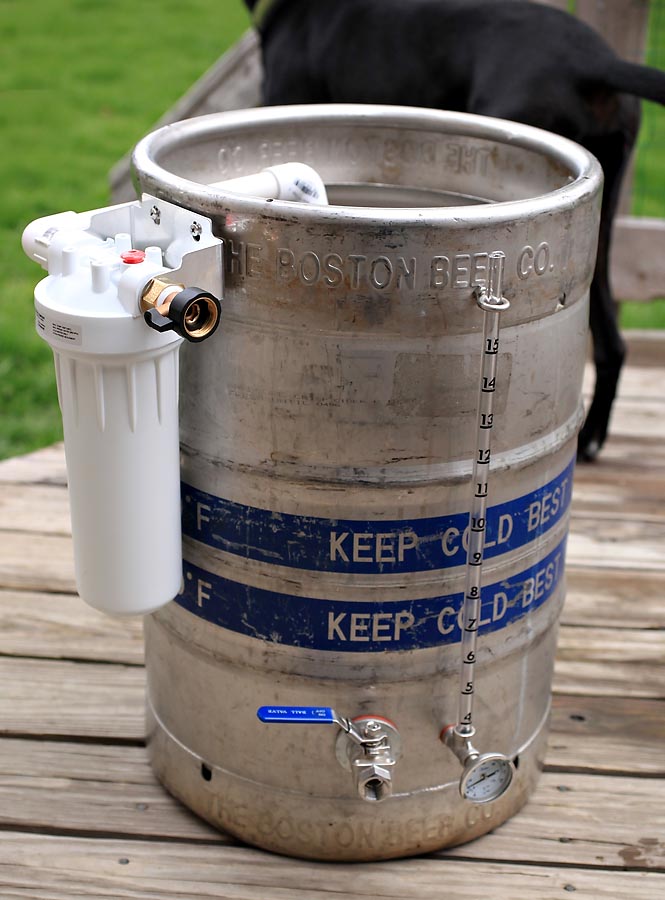
The following hardware I already had but here is what I used to mount the unit:
Mounts to keg wall while filling
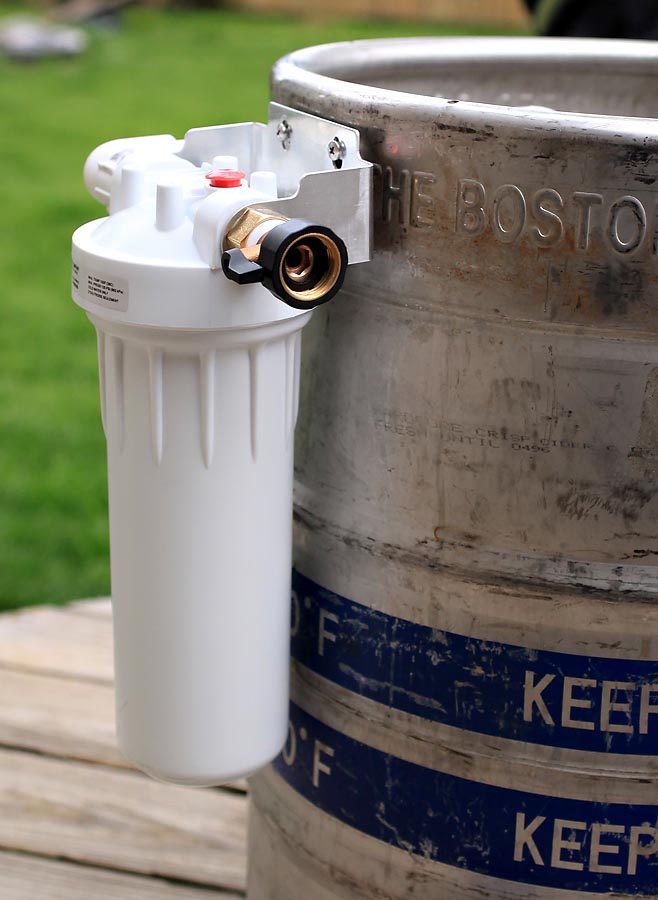
Pipe goes through the keg handle
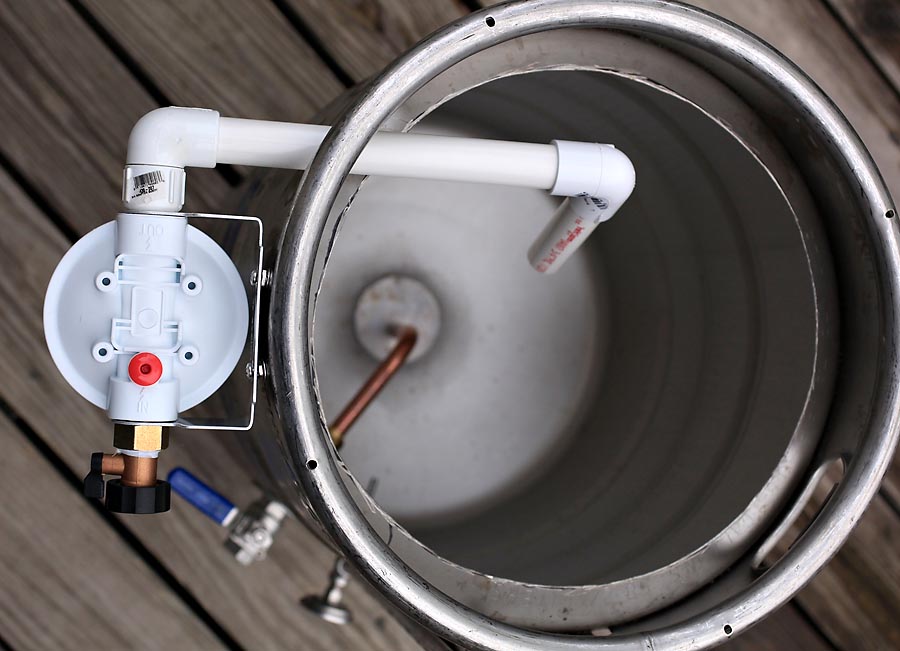
Could have done a little better job lining up my bolts and holes
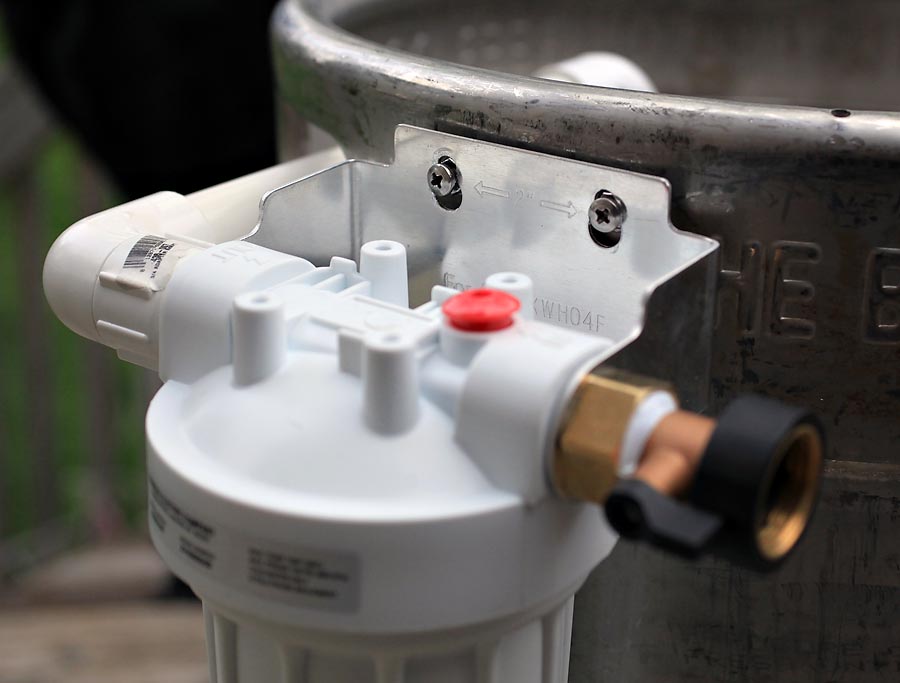
When you are done filling the unit comes off and I'm ready to light my flame.
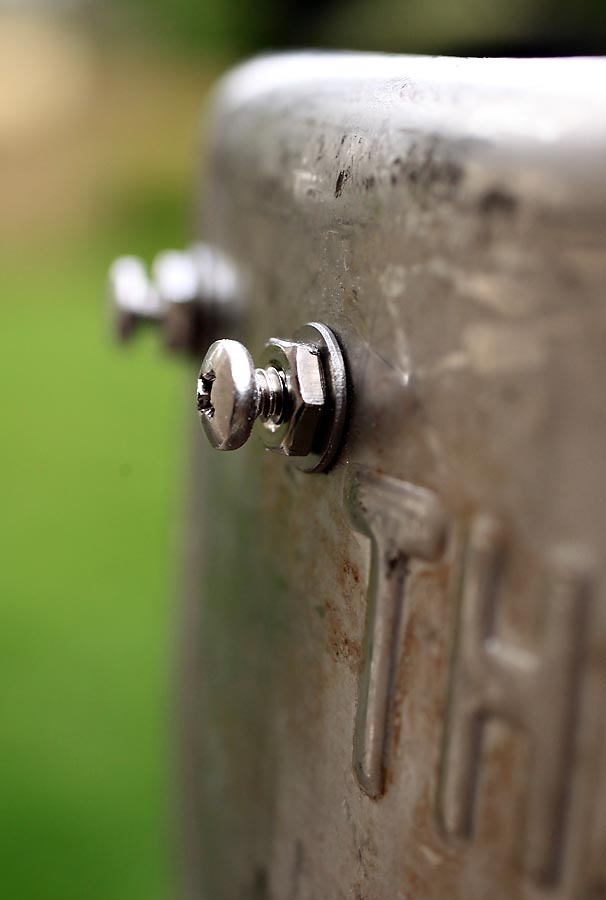
Lastly I also use a 50' white RV hose to run water from the spigot in my garage to where I brew (additional $15-20)
Hope this is helpful for anyone looking to do a similar project from Home Depot .
.
My setup is very close to what johnsma22 did but instead of building a bracket like lustreking did I used the bracket included with the GE water filter to have a permanent mount on my keg to hang it from. Also having sourced everything from Home Depot (vs. Lowes) I'm including the part numbers for each item in case anyone wishes to replicate it.

- GE Whole House Filter System - Model # GXWH04F - 18.97
- Carbon Household Sediment Filter - Model # FXWTC - 10.97
- Orbit 3/4 in. Threaded Brass Shut-Off Coupling - Model # 27933 - 5.97
- Watts 3/4 in. x 1/2 in. Brass H x MPT Hose Adapter - Model # A-679 - 3.63
- Mueller Streamline 3/4 in. PVC Schedule 40 Pressure MIPT x Slip Male Adapter - Model # 436-007HC - 0.33
- Mueller Streamline 3/4 in. PVC Schedule 40 Pressure 90-Degree Spigot x Slip Street Elbow - Model # 409-007HC - 0.98 (x2)
- VPC 3/4 in. x 2 ft. PVC Sch. 40 Pipe - Model # 22075 - 1.24
The following hardware I already had but here is what I used to mount the unit:
- 10-24 1" Pan Head screw (x2)
- 10-24 Nylon Lock Nuts (x2)
- #10 flat washer stainless steel (x4)
- 10-24 Hex Nut stainless steel (x2)
Mounts to keg wall while filling

Pipe goes through the keg handle

Could have done a little better job lining up my bolts and holes

When you are done filling the unit comes off and I'm ready to light my flame.

Lastly I also use a 50' white RV hose to run water from the spigot in my garage to where I brew (additional $15-20)
Hope this is helpful for anyone looking to do a similar project from Home Depot
 .
.



